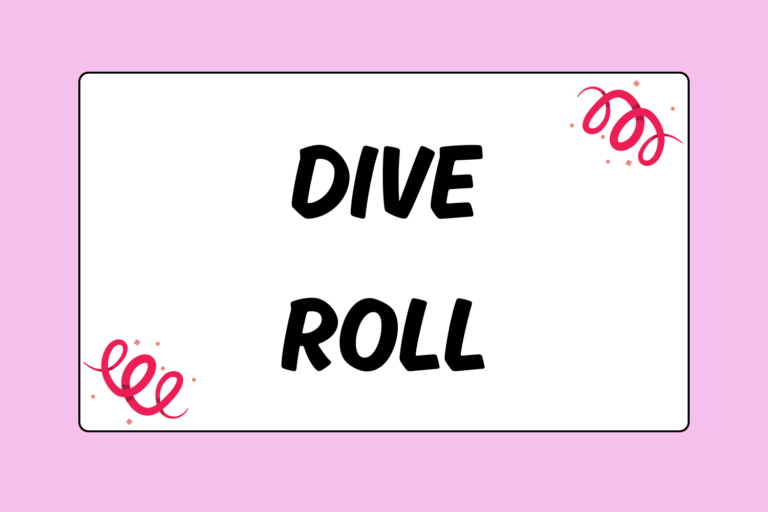If you want to progress as a gymnast, you need to have a firm understanding of the different positions – especially the more challenging ones. Each of the following advanced positions are essential building blocks for a competitive gymnast:
- Bridge
- Handstand
- Splits
- Candlestick
- Layout
Once mastered, you’ll soon be performing rolls on beam, flips on floor and vault, and kips on bars. Read on and learn how to conquer some of the most advanced positions out there.
Bridge
The bridge position is used in many different skills and is a progression toward back walkovers and back handsprings. Remember to always protect your head by keeping your arms strong and straight.
The Bridge Explained
Here’s what you’re looking for in a bridge position:
- Lay on your back with your hands pressed to the ground by your ears. Make sure your fingers are pointing toward your feet and your elbows are covering your ears.
- Pull your legs in so that your feet are flat on the mat and your knees are bent.
- Push your hips up off the mat (envision lifting your bellybutton to the ceiling).
- When you get in the proper position, your back should be arched and your head should be out.
- Once your back and hips are lifted off the mat, push your arms and legs straight.
- Concentrate on keeping your shoulders open and pushed over your hands.
The Bridge-up Chest to Wall drill ensures that you use proper form in the bridge position:
- Begin by lying down on the mat with your head a few inches away from a wall.
- Press up into your bridge.
- Once your legs and arms are straight, press your chest to the wall.
- Try to bring your legs together while keeping them straight.
- Hold this position for as long as possible.
- Rest and repeat, trying to get your chest closer and closer to the wall.
Handstand
Handstands are a key position for gymnasts to master and are used or passed through in many different skills. For example, round-offs, front handsprings, back handsprings, and giants on bar all require a handstand.
The Handstand Explained
A proper handstand is done as follows:
- Begin in a lunge position. Reach out toward the mat, but make sure you don’t put your hands close to your front foot.
- As you reach for the floor, your back leg should kick up behind you. Your lead leg will push off the ground to propel your body up and transfer your weight to your hands.
- Once your weight has been transferred to your hands, bring your legs together.
- Keep your toes pointed as you balance on your hands.
- Always keep your shoulders open, and push your body upward toward the ceiling.
- Your body should be hollow when a handstand is done correctly.
To practice the handstand position, try doing Body Length Handstands:
- Lay on your back with your arms up by your ears.
- Have a coach or another gymnast draw chalk lines on the mat that mark the position of your toes, bellybutton, and fingertips, respectively.
- Stand up and put your toes on the toe line.
- Lunge forward and put your front toe on the bellybutton line.
- Reach out and place your hands on the fingertip line as you kick up to your handstand.
- When you come out of your handstand, be sure your feet go down and end exactly where you started.
Hot Tip: Double Check Your Form
To check your form, lie face down on the mat with your arms up by your ears and your legs squeezed tightly together. Push your hips toward the mat as you pull your stomach in. Your hands should be in this position. Moreover, you can lay on your back while holding a tight handstand position and have a coach try to lift your body off the ground without allowing your hips to close or your form to break.
Splits
The splits are one of the most dreaded skills to learn as a beginning gymnast. As you practice the position, focus on quantity rather than duration: Practice all the time instead of holding the splits for as long as you can.
The Splits Explained
There are three different types of splits:
- Right leg splits: Your right leg’s forward in this position. Make sure you keep your right leg straight, your hips square, and your left knee touching the mat.
- Left leg splits: Your left leg’s forward in this position. Make sure you keep your left leg straight, your hips square, and your right knee touching the mat.
- Middle splits: Your legs are out to the sides with your hips kept open. Keep both legs straight. You can lean forward and put your elbows on the mat to get a better stretch (although correct form would have your chest up and legs completely out to each side with your arms reaching out to each side).
To practice your splits you must stretch often and allow your body to warm up. Try playing the Quicksand game to improve your form:
- Start in a deep lunge with your back knee on the mat.
- Push your hips forward, keeping your knee bent but behind your front foot.
- After holding this position for a few seconds, straighten your front leg and put your nose to your knee while holding your front foot.
- Then slide that straight front leg forward as you sink into the quicksand and push into your splits.
Hot Tip: Step It Up a Notch
Try using a panel mat or two to get a deeper stretch. Put your lead leg on the mat and your back leg on the ground. Reach forward, keeping your hands on the panel mat, and push your hip down toward the floor. Hold for 30-60 seconds and switch legs. For middle splits, put one leg on the panel mat and one on the ground. Push into your splits and feel the deeper stretch.
Candlestick
A candlestick position is very important to improving your bar and floor routines. Although it’s used in other events, having a good candlestick will help you advance quicker through many bar and floor skills.
The Candlestick Explained
A proper candlestick is done as follows:
- Lay down on the mat with your back on the floor, legs together, and arms up by your ears.
- Slowly raise your legs up so that your toes are pointing to the ceiling.
- Roll all the way back onto your shoulders as if you’re standing on your shoulders.
- It’s important to keep your chin tucked to your chest and your hips pressed forward.
- Keep your body resting in a tight hollow position and focus on your toes.
- Allow your arms to remain by your ears, or put your hands on the mat to help keep your balance.
The Candlestick Hop will improve your form:
- Start in a standing position with your arms up by your ears.
- Lower your body to the floor and roll back into your candlestick, keeping your form strong and tight.
- Once you hit your candlestick, lower your legs and proceed back to a standing position.
- Finish the drill by jumping up in the air without ever allowing your hands to touch the mat.
- Repeat 10-15 times.
To make standing and jumping a bit easier, place a panel mat behind you so that the candlestick is done on the softer padding.
Mental Edge
The candlestick position is extremely helpful when learning tricks on bars. For example, when learning to do a pullover you should remember that you must pull yourself over the bar in the candlestick position. Try lying down underneath a floor bar, grab the bar, and pull yourself into a candlestick position. Make sure your hips are touching the bar. Sometimes all it takes for a gymnast to perform a pullover is to make the mental connection that the candlestick is the correct way to pull yourself over the bar.
The Layout
The layout is used in every event. It’s an exciting skill that requires flight and it can be done either hollow or arched.
The Layout Explained
Here’s how to get in the correct layout position:
- A layout is performed in the air with the body fundamentally straight.
- Remember to keep your hips open.
- Keep your legs together and straight.
- Allow your body to rotate head over feet while maintaining either a hollow or arched position.
The layout is a difficult skill and can be practiced by doing Bouncing Trampoline Flops:
- Place an eight-inch mat on the trampoline with your coach holding the handles of the mat.
- Begin bouncing on the trampoline, facing away from your coach.
- Have a certain amount of jumps agreed upon and then bounce up as your coach slides the mat under you.
- Perform a back layout, under-rotating so that you land flat on your belly.
- Make sure your arms stay up at all times.
Practice Makes Perfect
You need to practice these positions often, but it’s even more important that you practice them correctly. Always go back and check your form. If you feel that you’re doing even one portion of the skill incorrectly, go through your basic and advanced positions and make the necessary adjustments.





